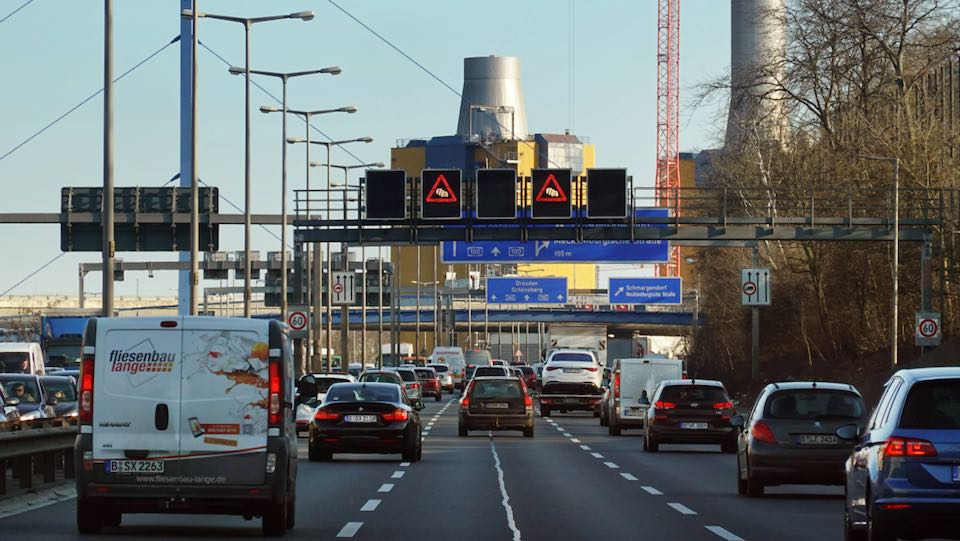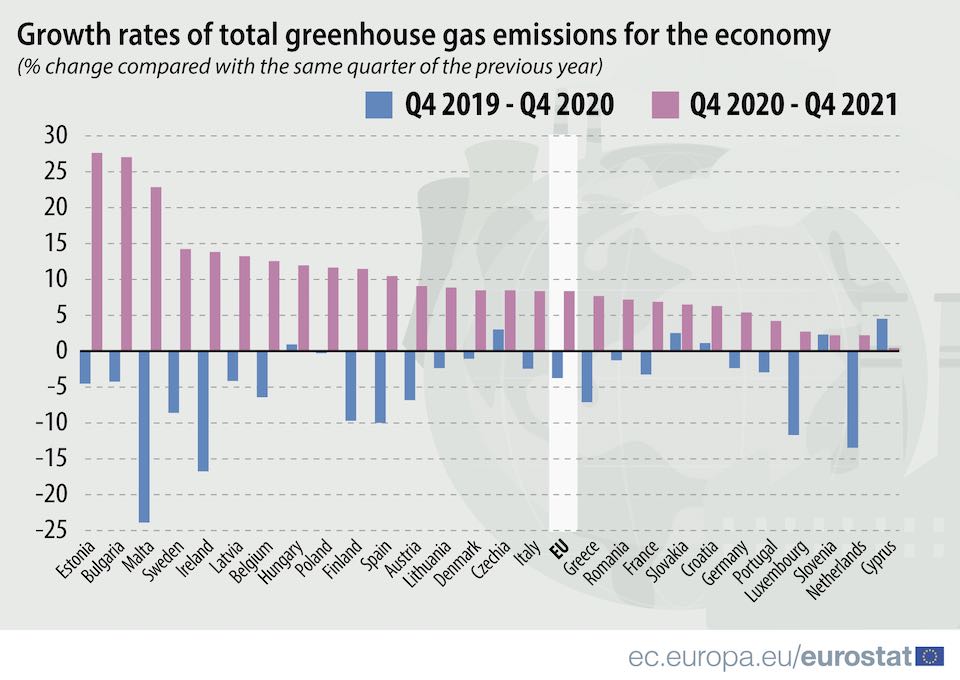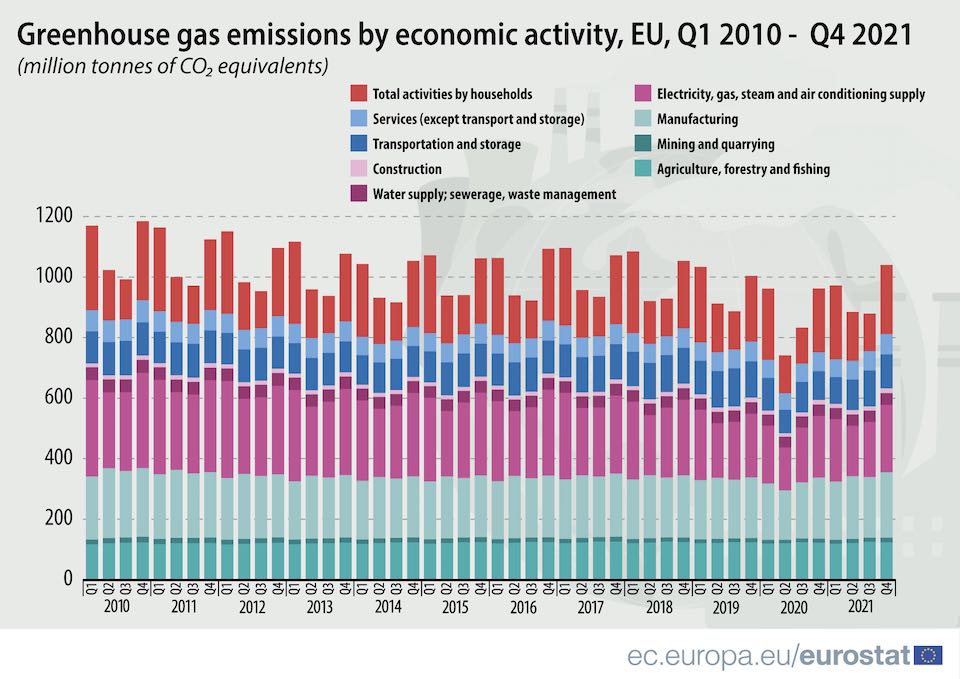EU greenhouse gas emissions almost as high as before pandemic

The Corona effect has faded: in the first quarter of this year, the states of the European Union emitted almost as many climate-damaging gases as in the same period before the pandemic. Between January and March, 1029 million tons of carbon dioxide (CO2) and other greenhouse gases were emitted, as the statistics authority Eurostat announced on Tuesday. In the same quarter of 2019, it was 1035 million tons, according to the report. Compared with the first three months of the pandemic years 2020 and 2021, emissions rose by 7 and 6 percent, respectively.
During the height of the pandemic, greenhouse gas emissions had fallen as the economy came to a halt in many places and mobility was reduced.
In the last quarter of 2021 (in German), pre-Corona levels of emissions were actually exceeded for the first time. Between October and December 2021, the EU emitted 1.041 billion metric tons of carbon dioxide (CO2) and other greenhouse gases such as methane, according to the report. This was an increase of about 3.5 percent compared to the same quarter before the 2019 pandemic.

(Source: Eurostat – CC BY 4.0)
The EU states have actually pledged to reduce emissions of climate-damaging gases by 55 percent (in German) by 2030 and to zero by 2050 – unless they can be removed and stored. The alliance of states is thus endeavouring to implement the Paris climate agreement.
Economy ramps up again
The main reason for the rise in EU emissions is the economic recovery from the Corona crisis, Eurostat wrote. Companies are working at full capacity again. Compared with the first quarter of last year, emissions of climate-damaging gases rose in all sectors of the economy, but remained the same for households.

(Source: Eurostat – CC BY 4.0)
He said the largest increases were in transportation and storage (up 21 percent), mining (up 15 percent) and construction (up 11 percent). Overall, households were responsible for the most emissions at 24 percent, followed by electricity and gas supply at 21 percent.
Hardly any decrease in the EU
In terms of individual countries, only the Netherlands and Finland managed to further reduce their CO2 emissions. In the first quarter of this year, they emitted 9 and 1 percent less respectively than in the first quarter of 2021. In Germany, emissions rose by around 2.5 percent. The highest increases were in Bulgaria (up 38 percent), Malta (up 21 percent) and Ireland (up 20 percent).
The latest data once again refute claims made by the Federal Ministry for Economic Affairs and Climate Action in 2020 that there had been a permanent trend reversal in greenhouse gas emissions in Germany. Among other things, the then CDU-led ministry had stated (in German), “In 2020, there was a Corona effect. However, the decline [in greenhouse gas emissions] can by no means be attributed solely to the Corona effect. Rather, structural changes are at work.” (dpa / hcz)